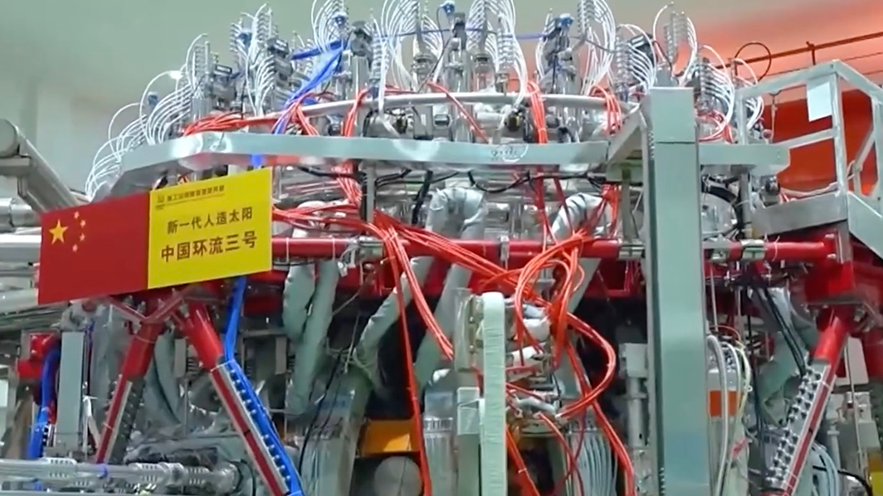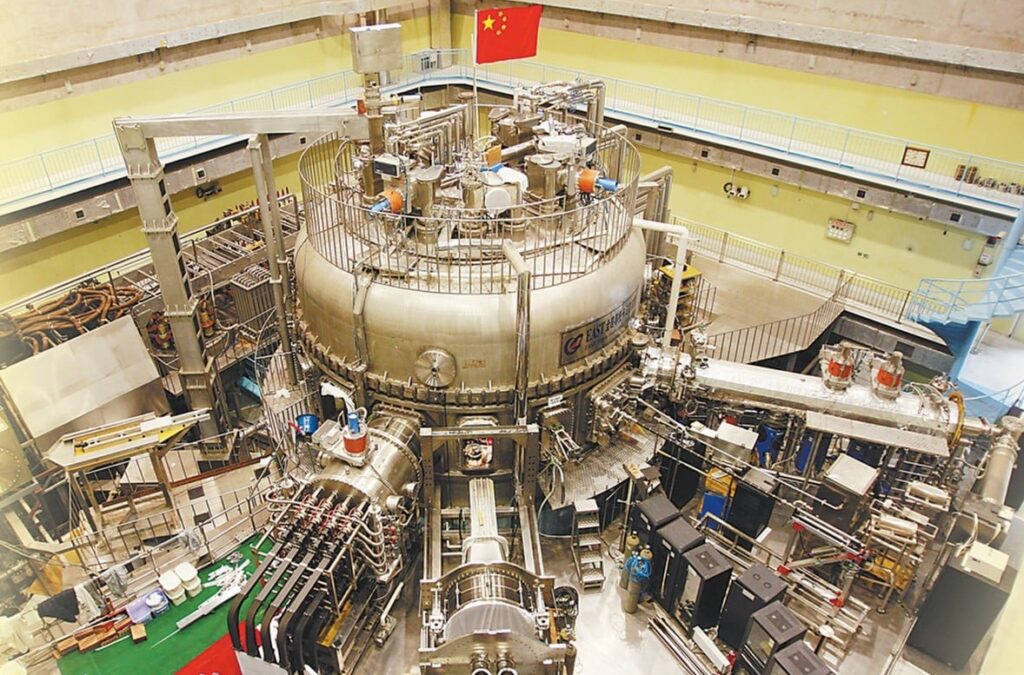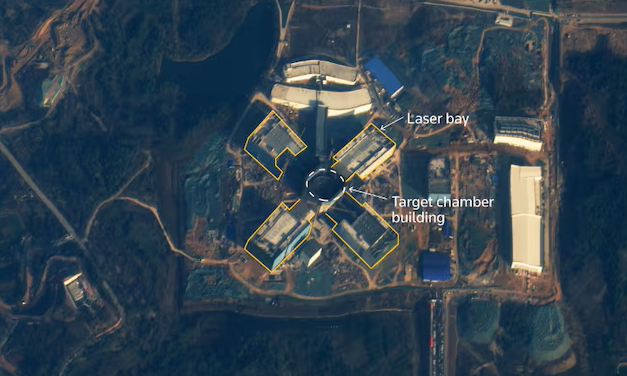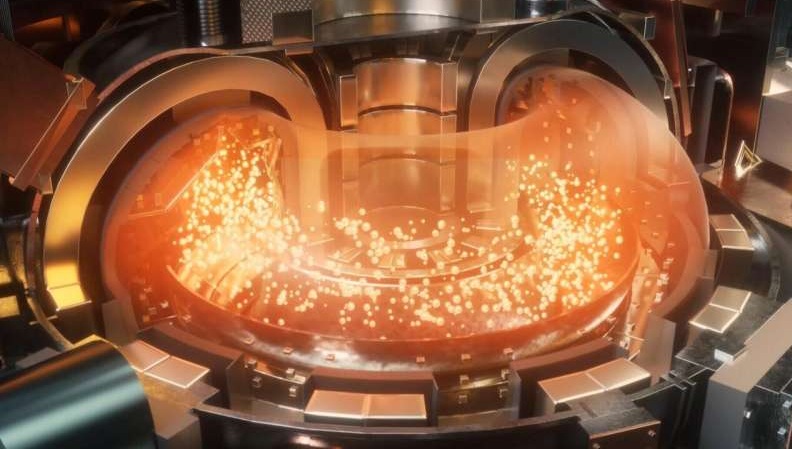China has branded some of its fusion experiments as Chinese Artificial Sun projects because they reproduce on Earth the high temperature plasma conditions that power the real sun. These Chinese artificial sun experiments are not machines that supply commercial electricity yet but they represent important steps in the science and engineering of controlled nuclear fusion.
Recent announcements from laboratories in Hefei and Chengdu report record length of sustained plasma and record plasma temperatures, outcomes that help researchers test materials control schemes and engineering systems needed for future reactors.
What is called an Artificial sun?
The term artificial sun is commonly used by media and researchers to describe advanced nuclear fusion devices that attempt to replicate the physical processes that power the Sun. In the Sun, immense pressure and gravity allow hydrogen nuclei to fuse into helium, releasing enormous amounts of energy.
On Earth, scientists try to mimic this process inside specialized reactors such as tokamaks and stellarators, where plasma composed of hydrogen isotopes is confined by powerful magnetic fields and heated to extreme temperatures often exceeding 100 million degrees Celsius, which is several times hotter than the core of the real Sun.
The goal is to achieve conditions where the plasma remains stable long enough for fusion reactions to occur at a net energy gain, meaning the system produces more usable energy than it consumes. China’s EAST (Experimental Advanced Superconducting Tokamak) and HL 3 reactors are examples that have been nicknamed Chinese artificial suns because they can sustain very high temperature plasma and long operation times that simulate the nuclear fusion process.
While these Chinese artificial sun machines do not generate light or energy on the scale of the real Sun, they are critical research tools that advance the possibility of clean, virtually limitless energy through controlled nuclear fusion.
Major devices and facilities
EAST the Experimental Advanced Superconducting Tokamak
EAST is a superconducting tokamak operated by the Institute of Plasma Physics Chinese Academy of Sciences in Hefei. It is designed for long pulse operation and integrated testing of plasma control and divertor concepts.
In January 2025 EAST sustained a high confinement plasma for 1,066 seconds while maintaining temperatures above 100 million degrees Celsius, a result framed by the team as a world record for steady state operation.
HL 3 the Huanliu 3 tokamak
HL 3 is a next generation tokamak based in Chengdu that targets higher temperature and improved confinement regimes. Reports from HL 3 experiments indicate ion temperatures around 117 million degrees Celsius and electron temperatures near 160 million degrees Celsius in reproducible runs, and stable operation at plasma currents around 1.6 mega amperes in diverted configuration has been described in technical summaries.
These numbers are useful because they push the triple product of density temperature and confinement time toward regimes relevant to ignition research.

Engineering testbeds and the Comprehensive Research Facility for Fusion Technology
China is also investing in engineering and integration facilities such as CRAFT the Comprehensive Research Facility for Fusion Technology which will test remote handling vacuum sector structures cooling and other reactor components at scale.
Such facilities allow teams to prototype the heavy engineering systems a future demonstration reactor will require.
Key technical milestones and statistics
- EAST sustained H mode high confinement plasma for 1,066 seconds in January 2025 while maintaining temperatures above 100 million degrees Celsius. This extended earlier EAST records and provided a platform for long pulse control experiments.
- HL 3 reported ion temperatures of about 117 million degrees Celsius and electron temperatures around 160 million degrees Celsius in March 2025 while operating reproducibly in diverted configurations. These temperature values and improvements in the fusion triple product are important progress markers for high performance scenarios.
- Reported stable plasma currents in HL 3 were near 1.6 mega amperes in diverted configurations, a parameter that affects confinement and heating requirements.
How these results advance research fundamentals
Raising the triple product and testing long pulse control
The central physics target in fusion is to increase the product of plasma density temperature and confinement time. EAST long pulse experiments demonstrate control strategies and wall conditioning methods that keep the plasma in a high performance state for extended periods.
HL 3 higher temperature runs probe confinement physics at extreme conditions. Together these Chinese artificial sun experiments illuminate pathways to increase the triple product in practical operational regimes.
Validating divertor and heat exhaust concepts
Heat flux handling at the plasma edge is a major materials and engineering challenge. HL 3 work has introduced novel divertor magnetic configurations such as a tripod divertor that aim to spread heat loads more evenly and reduce peak thermal stress on plasma facing components.
Validating such approaches under realistic heat loads is essential before scaling to demonstration power devices.
Materials testing and remote maintenance
Long pulse and high temperature operation increases demands on plasma facing components and structural materials. China facilities are coupling plasma experiments with remote handling and robotic maintenance testbeds so that researchers can study erosion deposition and neutron relevant effects while also developing methods for in situ component replacement.
These engineering efforts reduce risk for future experimental reactors and help define material specification and maintenance cycles.
Diagnostics control and computational modeling contributions
EAST and HL 3 both use extensive diagnostic suites such as Thomson scattering microwave interferometry spectroscopy and magnetic probes to measure temperature density current and impurity content in real time.
Advanced feedback control systems together with integrated modelling for magneto fluid dynamics and kinetic effects allow teams to anticipate and mitigate instabilities. Improvements in diagnostics and control algorithms directly translate into longer stable pulses and higher quality data for physics understanding.

Notable institutions in Chinese Artificial Sun
The principal organization running EAST is the Institute of Plasma Physics Chinese Academy of Sciences IPP CAS which publishes official reports and technical summaries. Project leads and division heads such as Gong Xianzu have been publicly associated with EAST experiments in media and official images.
Senior figures at IPP CAS and collaborators in university and industry consortia coordinate experiments and engineering developments. For specific named researchers and lead authors consult the IPP CAS press announcements and published papers linked below.
International collaborations for Chinese Artificial Sun
China experiments complement global fusion efforts rather than replace them. ITER in France is a multinational facility designed to demonstrate net fusion power in deuterium tritium operation at a larger scale while other devices such as WEST and SMART pursue related objectives.
Collaborative research intensifies when teams share diagnostics techniques materials test results and integrated modelling approaches. China published results add data points that help the global community refine designs and materials choices for demonstration reactors.
What these milestones do not imply yet
Sustained high temperature plasmas and longer pulses are significant scientific achievements but they are not the same as a commercial fusion power plant. Net energy gain from an integrated system that produces more usable electricity than the total input remains to be demonstrated at reactor scale under economically viable conditions.
Large scale deployment will require sustained progress in materials heat management and cost reduction over many years. Reports from EAST HL 3 and related facilities are steps along a long road rather than immediate solutions for grid scale power.
Policy safety and non proliferation considerations
Some fusion facilities and laser based high energy density testbeds are sensitive technologies because they can support both civilian fusion research and analysis relevant to weapons physics simulations. International transparency and export control frameworks shape how data and components are shared.
Reporting by independent analysts and news agencies has flagged the importance of clear communication about the purpose of large research installations and the limits of what they demonstrate.

Final Thoughts
Chinese artificial sun programs represented by EAST and HL 3 are delivering important experimental data on long pulse plasma operation high temperature regimes and engineering testbed integration. These Chinese artificial sun results advance the global knowledge base needed to design future demonstration reactors and to address the materials and systems engineering challenges that remain.
While commercial fusion power is not yet a reality these experimental milestones improve confidence in research strategies and offer test platforms for the next generation of fusion science.

